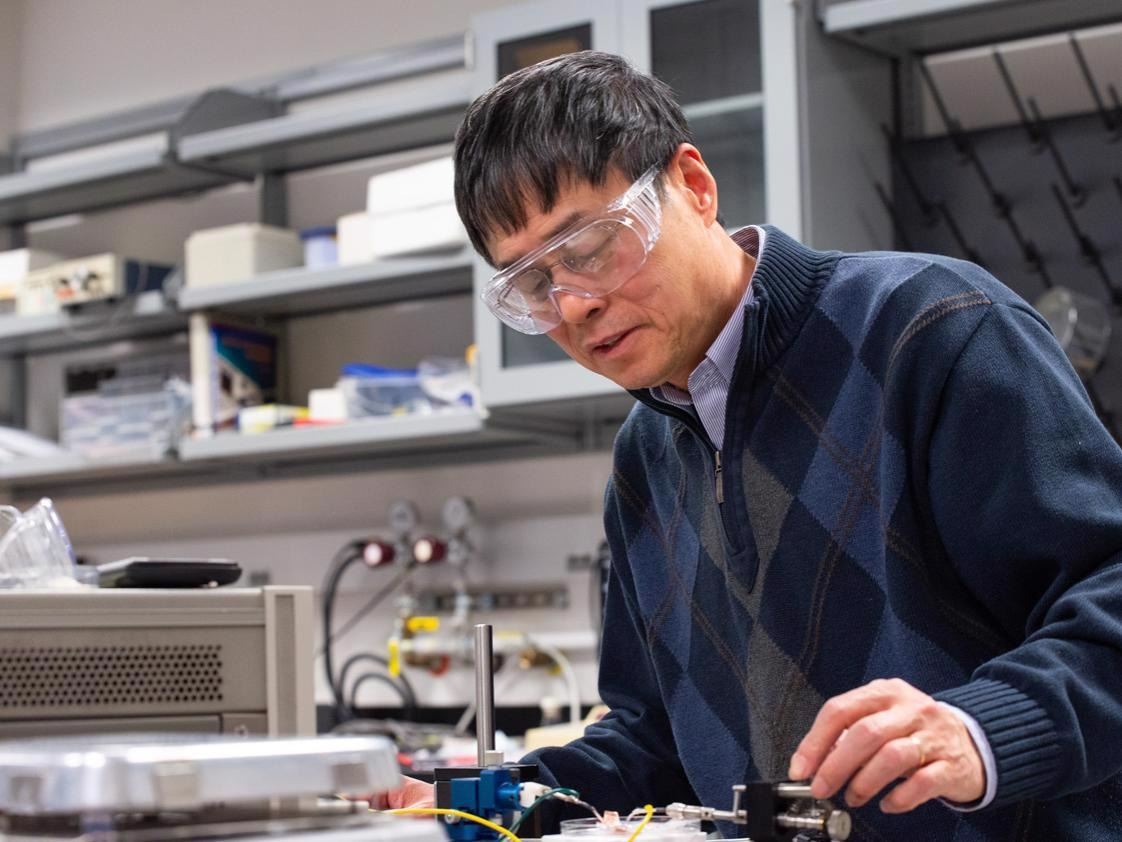Piezoelectric materials convert mechanical stress into electricity or vice versa, which is useful in actuators, sensors and several other applications.
 Qiming Zhang, distinguished professor of electrical engineering, led a team of researchers to develop a robust piezoelectric material that can convert mechanical stress into electricity. Image Credit: Tyler Henderson/Penn State.
Qiming Zhang, distinguished professor of electrical engineering, led a team of researchers to develop a robust piezoelectric material that can convert mechanical stress into electricity. Image Credit: Tyler Henderson/Penn State.
However, implementing piezoelectrics in polymers, that is, materials made of molecular chains and generally utilized in drugs, plastics and more — can be hard, as per Qiming Zhang, distinguished professor of electrical engineering.
Zhang and a Penn State-headed group of interdisciplinary scientists designed a polymer with strong piezoelectric effectiveness, leading to 60% more effective electricity generation compared to earlier iterations.
The study was published on March 25th, 2022, in the journal Science.
Historically, the electromechanics coupling of polymers has been very low. We set out to improve this because the relative softness of polymers makes them excellent candidates for soft sensors and actuators in a variety of areas, including biosensing, sonar, artificial muscles. and more.
Qiming Zhang, Distinguished Professor, Electrical Engineering, Penn State University
To develop the material, the scientists intentionally implemented chemical impurities into the polymer. This process, called doping, enables scientists to tune the properties of a material to produce the required effects, provided they combine the right number of impurities.
The addition of too little dopant could help prevent the required effect from initiating, while adding too much could initiate undesirable traits that hinder the function of the material.
The spacing between positive and negative charges has been distorted by the doping inside the structural components of the polymer. The distortion separates the opposite charges, thereby enabling the components to house an external electric charge in a highly efficient manner. Zhang stated that this accumulation improves electricity transfer in the polymer when it is deformed
For the doping effect to be enhanced and to guarantee alignment of the molecular chains, the scientists stretched the polymer. As per Zhang, this alignment boosts more of an electromechanical response compared to what comes from a polymer with randomly aligned chains.
The efficiency of the polymer’s electricity generation was vastly increased. With this process, we achieved a 70% efficiency—a vast improvement from 10% efficiency before.
Qiming Zhang, Distinguished Professor, Electrical Engineering, Penn State University
This strong electromechanic performance, which is common in rough ceramic materials, could allow a range of applications for the flexible polymer.
Since the polymer displays resistance to sound waves comparable to that of water and human tissues, it could be employed for use in medical imaging, underwater hydrophones, or pressure sensors.
Also, polymers tend to be more weightless and configurable compared to ceramics, so this polymer could offer chances to explore enhancements in robotics, imaging, and more, Zhang said.
The other contributors of this work include Xin Chen, with the Penn State Department of Materials Science and Engineering in the College of Earth and Mineral Sciences; Hancheng Qin, Bing Zhang, Wenchang Lu, and J. Bernholc with North Carolina State University; Xiaoshi Qian with Shanhai Jiao Tong University in China.
Additional authors include Wenyi Zhu with the Penn State School of Electrical Engineering and Computer Science; Bo Li and Shihai Zhang with PolyK Technologies in State College; Ruipeng Li with Brookhaven National Laboratory; Lei Zhu with Case Western Reserve University; and Fabrice Domingues Dos Santos with Arkema in France. Also, Qiming Zhang is affiliated with the Materials Research Institute at Penn State.
The study was financially supported by the US Office of Naval Research.
Journal Reference:
Chen, X., et al. (2022) Relaxor ferroelectric polymer exhibits ultrahigh electromechanical coupling at low electric field. Science. doi.org/10.1126/science.abn0936.